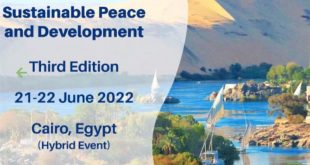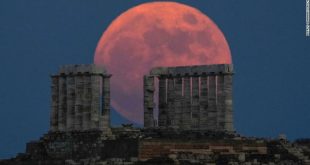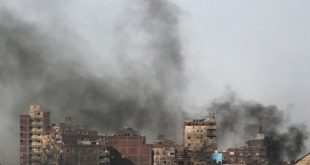Samar Samir – Egypt Today
The tripartite negotiations between Egypt, Sudan and Ethiopia concerning the controversial Grand Ethiopia Renaissance Dam (GERD) on the Blue Nile river are still shrouded in uncertainty. It instils fear of drought into about 50% of the population and thousands of Egyptian farmers whose livelihoods rely on cultivating only 3% of Egypt’s territories.
As the Nile River supplies about 93% of Egypt’s annual renewable water resources. The construction of the dam imposes great threats to the nation, if a sustainable agreement on its operational rules and the process of filling its reservoir is not reached.
Egyptian farmers speak up
Speaking to Business Today Egypt, Head of Farmers’ Syndicate Hussein Abdel-Rahman Abu Saddam explains that if the agriculture sector loses 20 billion cubic meters of water, about 2 million feddans will turn into non-arable land, thereby negatively affecting about 10 million people. “By association, many supplementary industries will be affected such as agro-industrial factories and rice mills. In addition, part of the agriculture infrastructure could be lost after we had already dug new irrigation canals and reclaimed other areas of lands”, he adds.
“Egypt’s renewable water resources provide approximately 65 billion cubic meters of water annually, including 55.5 billion cubic meters from the Nile River, representing about 90%… With the increase in population and the constant agricultural expansion, Egypt suffers from a severe water shortage”, Abu Saddam says. The agricultural sector is highly vulnerable to the repercussions of water scarcity, as it consumes about 80% of the Egyptian water resources, he added.
Abu Saddam noted that farmers are re-using 20 billion cubic meters of agriculture water waste of some crops like rice in irrigating other crops.
Salama Ahmed, a farmer in al-Mahallah al-Kobra city of Al-Gharbiya governorate, expressed his fear of the situation, and how he is dealing with it. He is certain the agriculture sector would be affected, and that many farmers fear this matter. “However, as we are living in Gharbia governorate, Egypt’s Delta, our crops will not be severely affected, except for rice because it consumes a large amount of water. If drought occurred due to the dam construction, the Delta would largely be unaffected, unlike other arable lands in upper Egypt and Fayoum, which have reddish soil”, Says Ahmed.
“If water levels declined, we would resort to digging wells as underground water is located 2 metres beneath the ground”, according to Ahmed. He recently began using a drip irrigation system to conserve water amid the current water tensions. “Drip irrigation saves one-third of the water consumed by surface irrigation and saves half of the amount of the fertilizer”, he explains.
Ahmed could be lucky because he lives in Egypt’s Delta, but arable lands in other parts nationwide already suffer from drought. “Some areas already suffer from droughts in Minya’s Al-Edwah on the West bank of the Nile”, says Abu Saddam. He attributes the drought to the lack of water distribution due to the expansions of new agricultural lands.
Egypt’s agricultural lands reached 10 million feddans in 2015, compared to 9.6 million feddans in 2010, based on a 2016 report by the Central Agency for Public Mobilization and Statistics (CAPMAS). According to World Bank data, Egypt’s agricultural areas increased to 3.6% in 2015, compared to 2.6% in 1961.
The story of the dam
Ethiopia began building the dam on the Blue Nile river in May 2011, without consulting downstream countries, Egypt and Sudan. Cairo has voiced its concern over how the dam affects the country’s annual share. Since 2014, the three countries have held tripartite negotiations to reach an agreement concerning the dam.
The Declaration of Principles, signed in 2015, under which the downstream countries should not be negatively affected by the construction of the dam. Negotiations have continued in the hopes of finding a settlement. However, the talks reached several stalemates throughout 2019 and this year, primarily regarding the operation of the dam and the reservoir’s filling timeline.
In July 2020, Ethiopia unilaterally carried out the first phase of the filling process with 4.9 billion cubic meters; and it is expected to reach 13 billion cubic metres during the second phase, as reported by the BBC. Ethiopia seeks to fill the reservoir in five to seven years. Egypt’s average water per-capita is expected to drop to 582 cubic metres by 2025, from 663 cubic metres/year in 2014, according to CAPMAS. Additionally, Egypt’s population is likely to reach 115.3 million people by 2027, which would consequently be more of a burden on Egypt’s water resources.
At the regional workshop organized by FAO in September 2019, on climate change impact on agriculture and water, Egyptian Minister of Water Resources and Irrigation Mohamed Abdel-Atti said, “a 2% decline of Egypt’s Nile water share would turn 200,000 feddans into non-arable lands”.
Reaching an agreement
“If a final agreement is reached, the negative consequences could be overcome during the years of the filling process”, said Dr. Houssam el-Moughazi, former Minister of Water Resources and Irrigation.
“Sure, water losses, evaporation, and underground water leakage could cause a further decline. However, the Renaissance dam is an annual dam and the inflow of water to it should be released over 12 months in order to receive an amount of rainwater in the following water year, which starts in June and lasts until August”.
In response to a question of whether the second phase of the filling would cause a large impact on downstream countries, Moughazi said, “It is hopeful that the three countries reach a final agreement during this time before the second phase”.

Fears and precautions
In case a severe water shortage is recorded and Ethiopia controls the amount of water that flows to Egypt, it would definitely affect the agricultural sector, which represents 12% of Egypt’s GDP. “This would affect the production of all basic crops like sugar cane, rice, maize and wheat”, Dr. Mohamed Meshaal, head of the Scientific Committee for the Agriculture Economy and Advisor to the Minister of Agriculture, told Business Today Egypt.
“Currently, there is no shortage in water coming to Egypt, and this year the water levels increased to an unexpected level. I rule out that it [drought] could happen”, Meshaal argues.
“Water scarcity leads to an increase in salinity in low-level lands and leads to wasting and death of lands, which will negatively affect the agricultural sector as a whole, disrupt the desired agricultural development and increase the unemployment rate with a massive damage to the Egyptian economy”, says Meshaal.
“The government is working on using modern irrigation technology systems in order to conserve water”, he added. The Ministry of Water Resources and Irrigation announced number of irrigation development projects in April 2020, with the aim of changing from surface irrigation into the drip irrigation, using solar energy to rationalize water consumption.
“The Nile water issue is a matter of life or death for Egyptians”, said President Abdel Fattah al-Sisi repeatedly during his speech at the United Nations General Assembly and in other occasions to Egyptians. Nevertheless, for the time being, the lifeline of the Egyptian nation is still threatened, leaving millions in fear as the negotiations continue.






